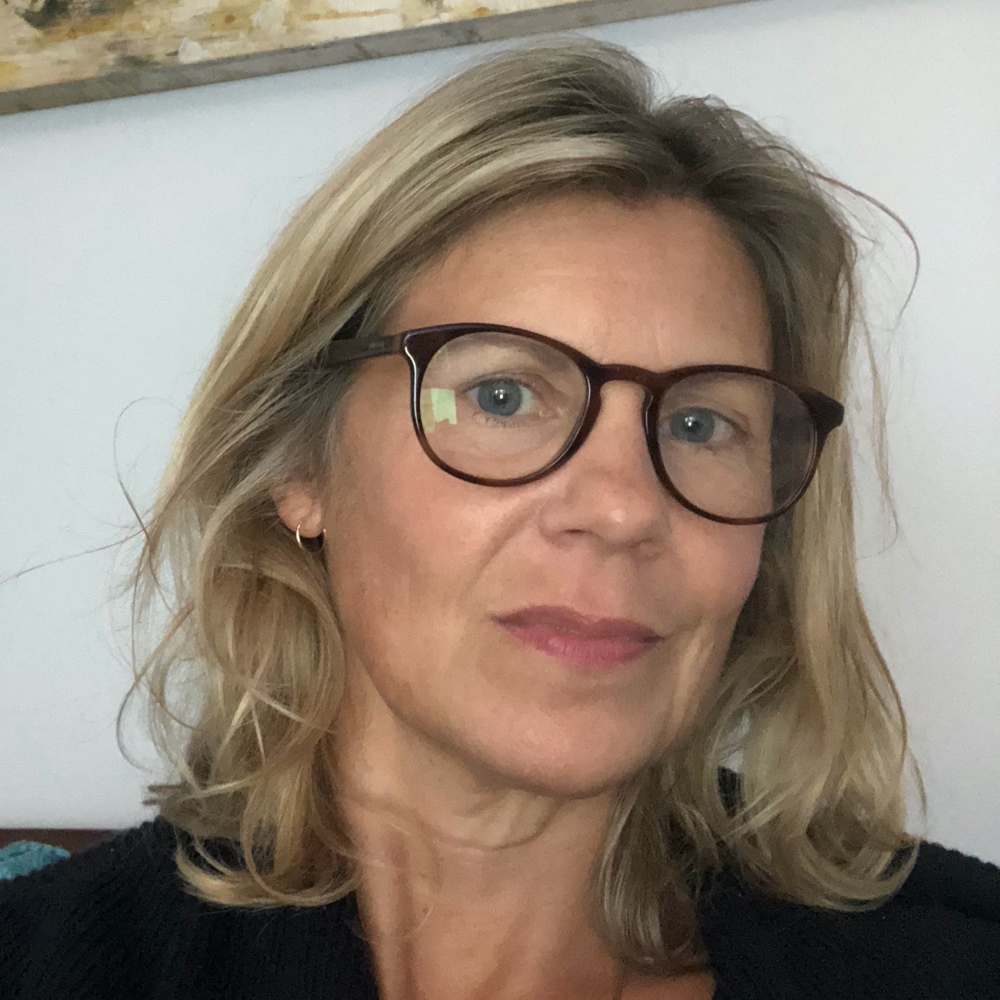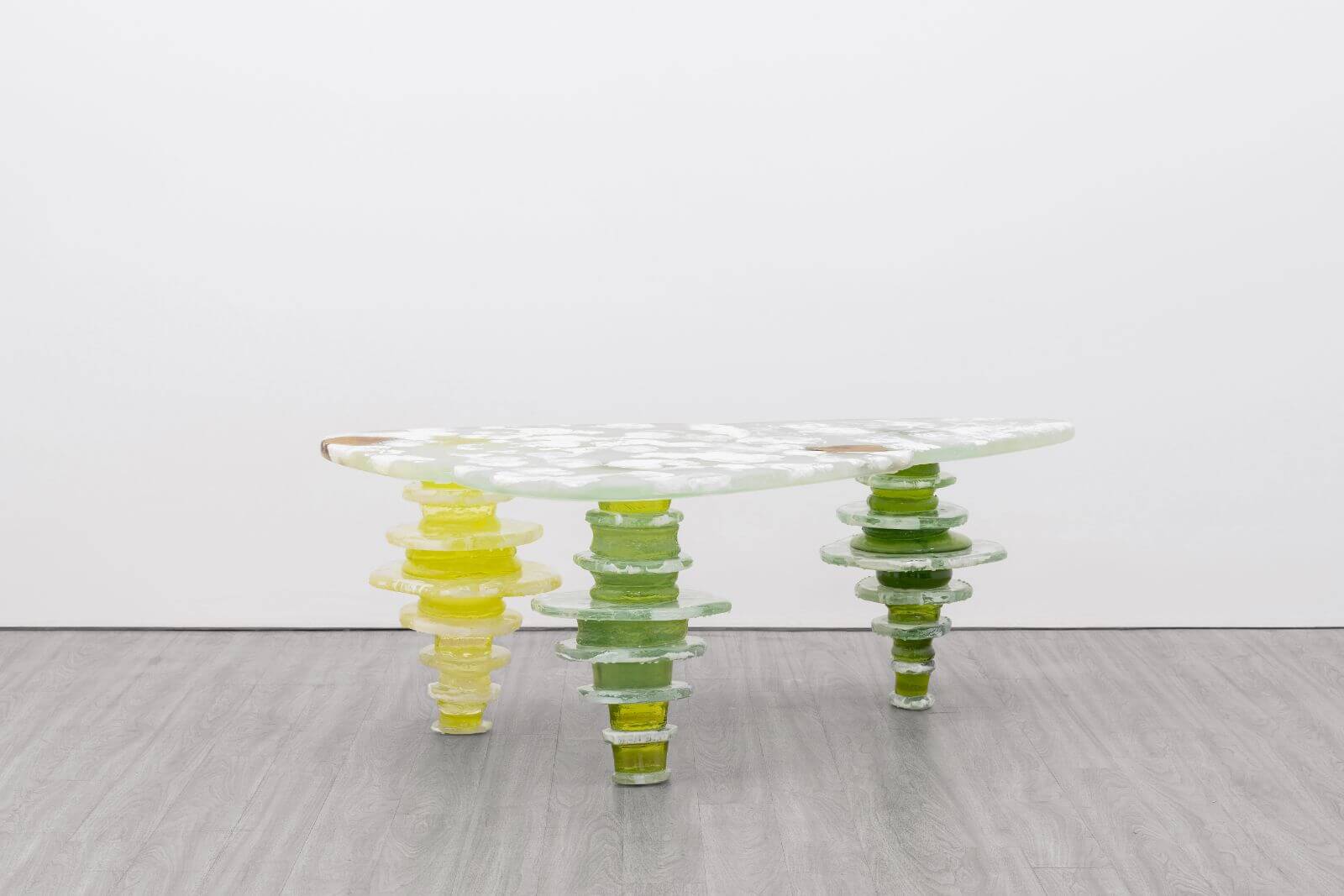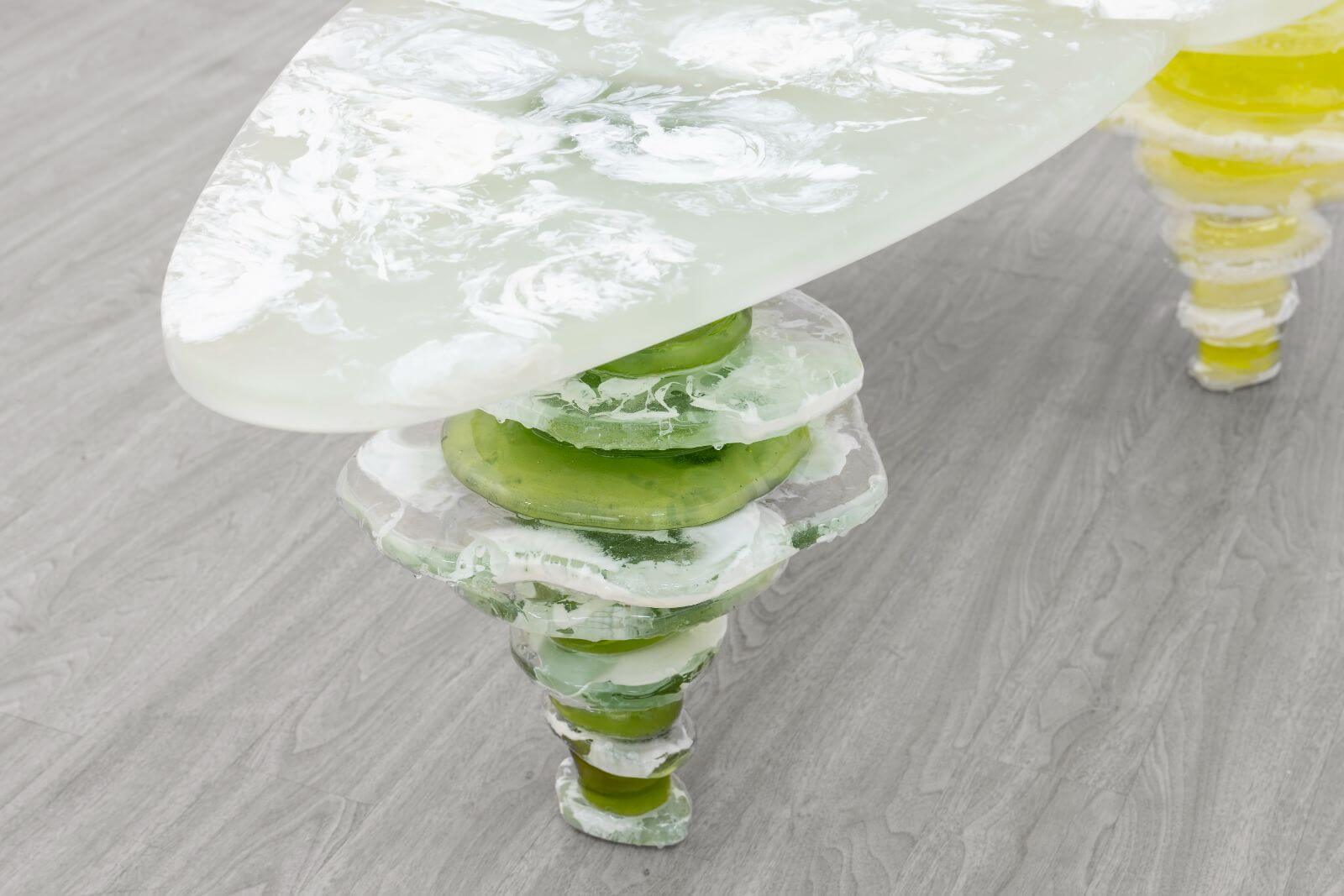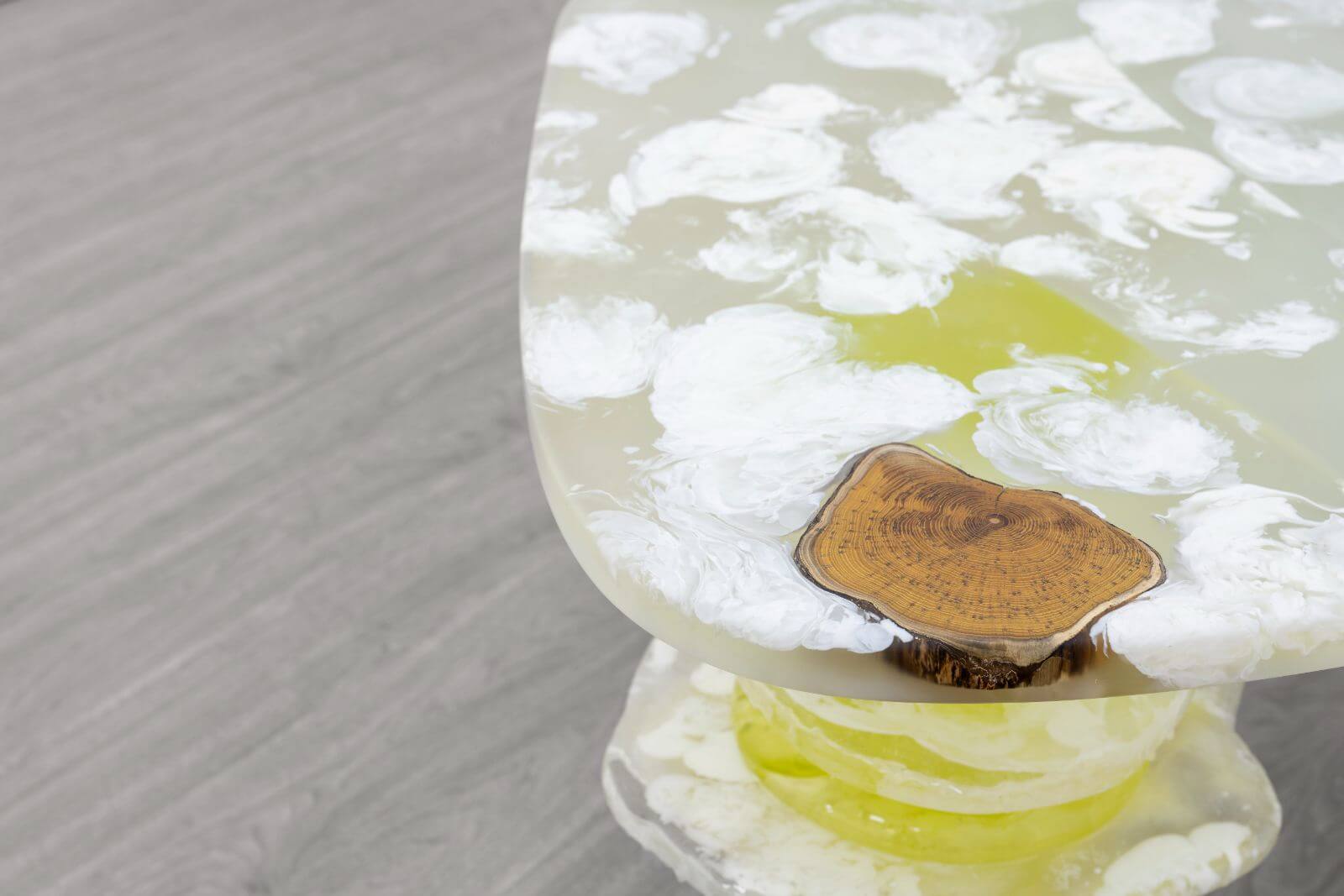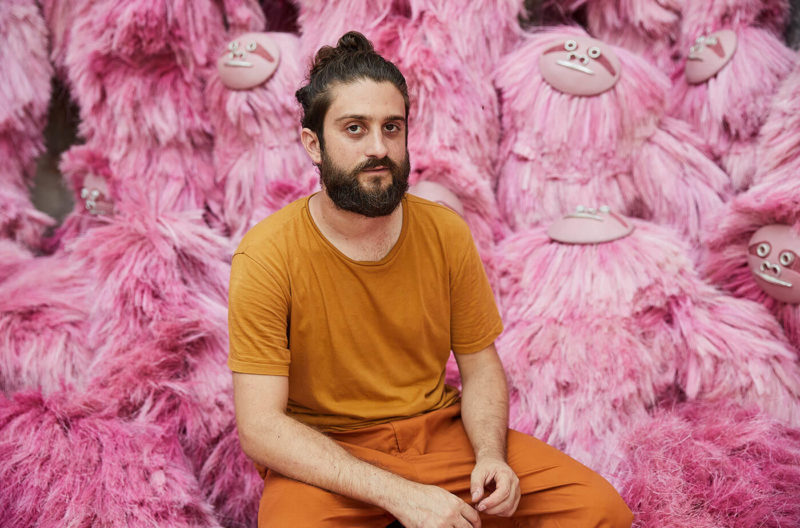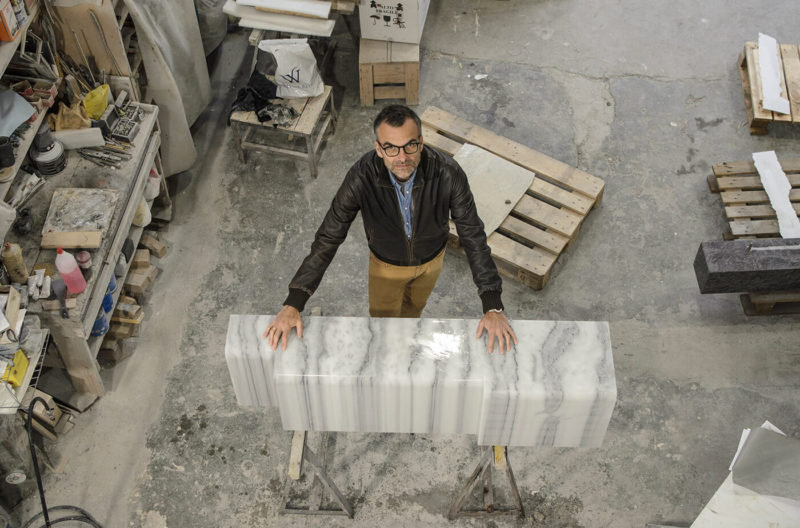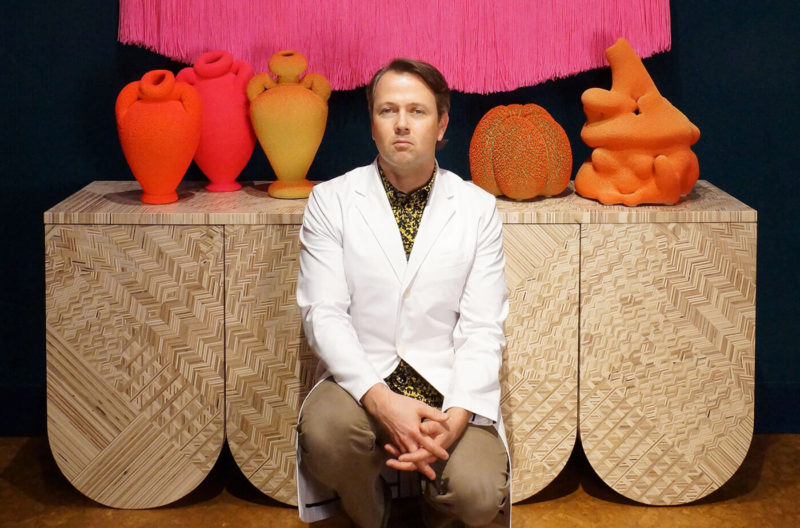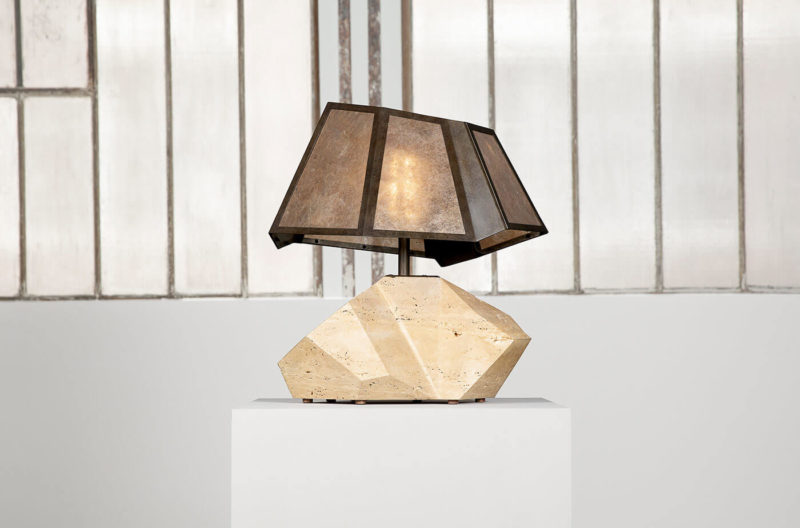Jie Wu
“I am making the antiques of the future.”
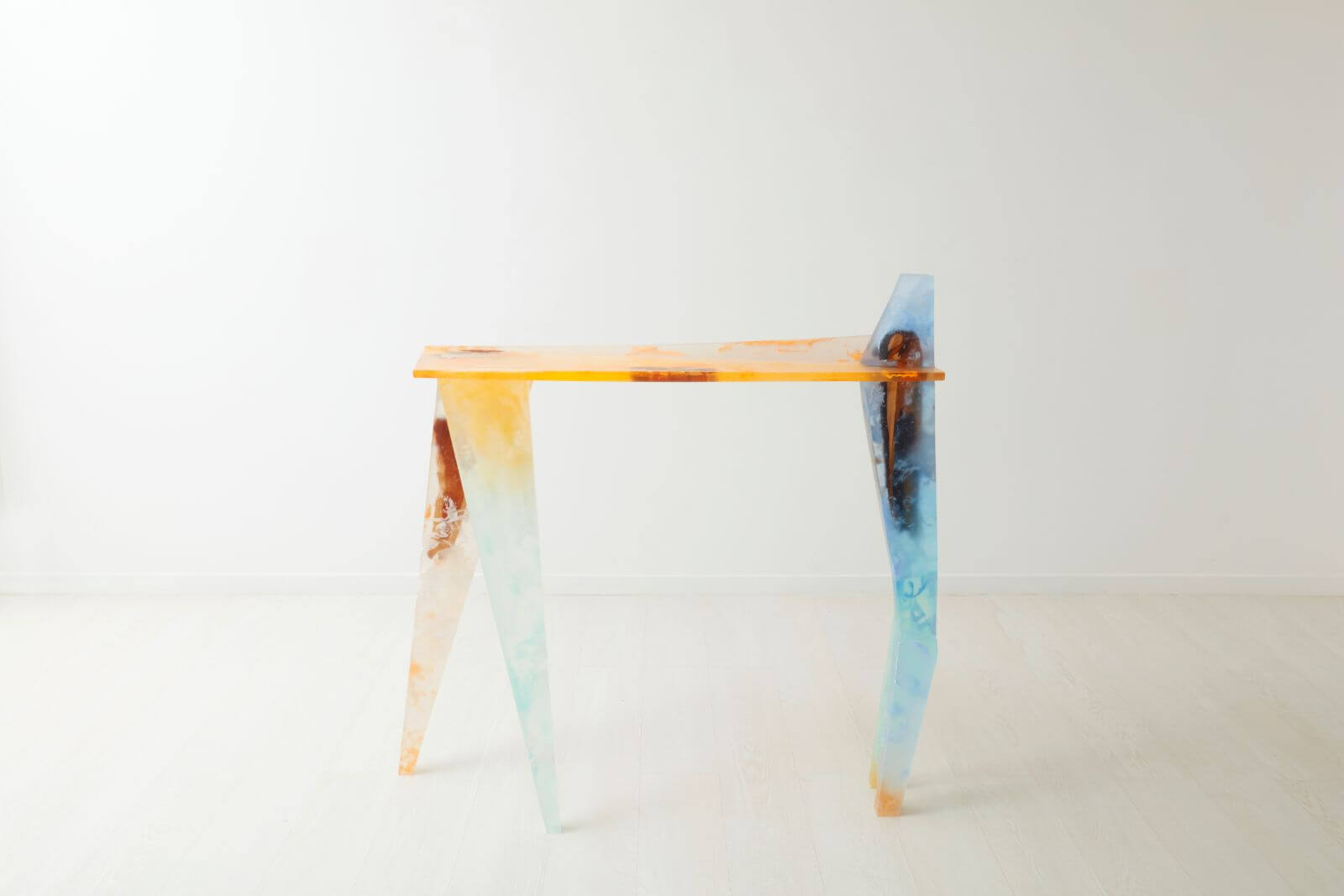
Jie Wu, ‘Out Jump Console’, 2020
COURTESY: Jie Wu & Gallery FUMI
EMBEDDING CHINESE ROSEWOOD inside blocks of candy-coloured resin is, in the design vernacular of Jie Wu, creating a new kind of textile. Her objects and furniture are all made of this new composite material, which is multi-layered, dense with colour, yet light-filled. “People have a particular idea of textiles that is always flat-form, like weaving, printing or knitting,” Wu explains over coffee at London’s Gallery FUMI, “but I wanted to give textiles a new direction.”
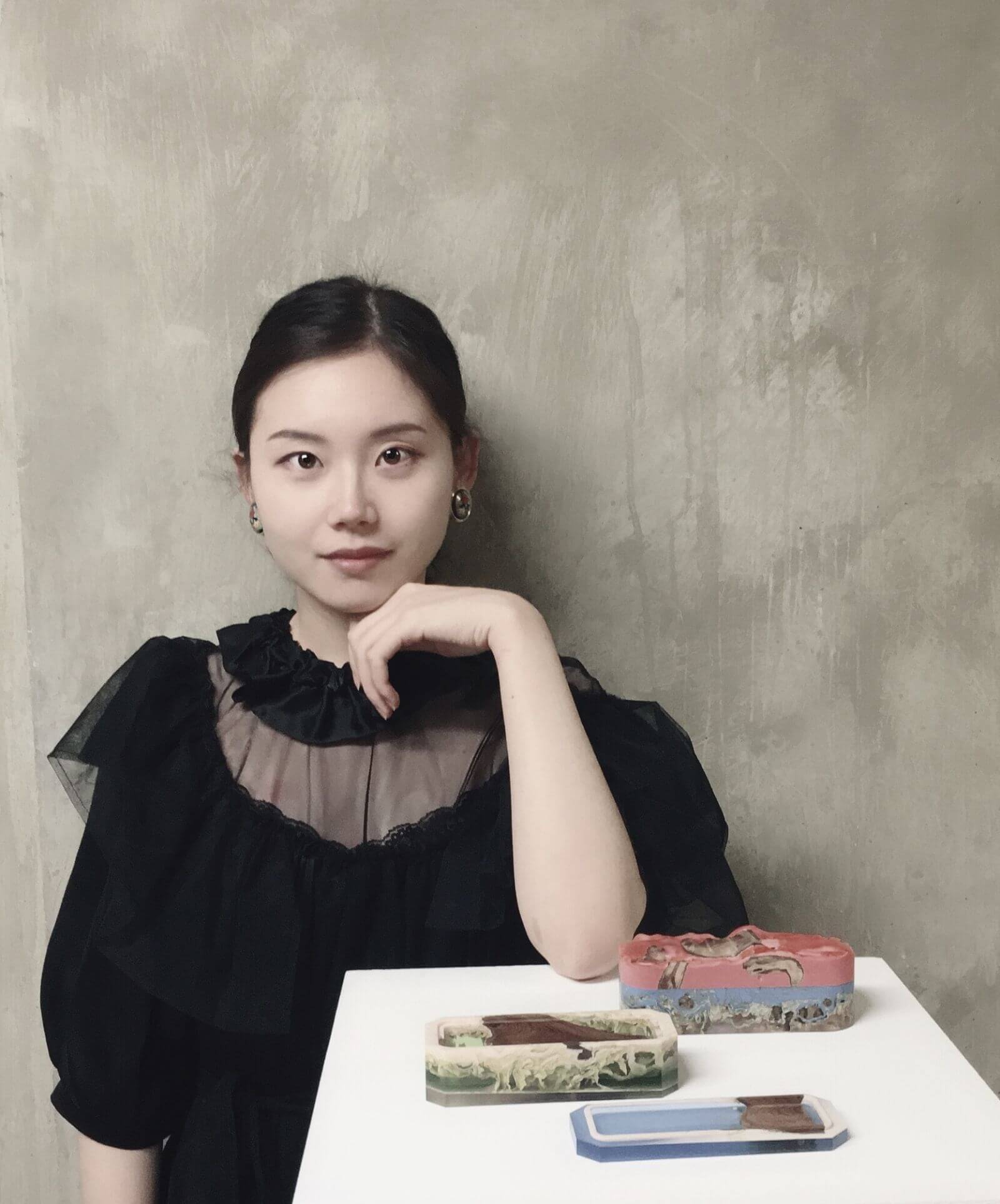
Jie Wu
COURTESY: Jie Wu
Born in Suzhou, “a water town with classical Chinese gardens,” Wu grew up in nearby Shanghai. “As a child,” Wu remembers, “I loved touching textiles, the texture, the smell of the cloth. They were always going to be my starting point.” Her father was an antiques collector and gave Wu an early design education, “He’d take me to the auction houses and tell me the story behind each piece of furniture or object and why they were made in a particular shape or style. I was fascinated,” she explains. “He also taught me to treat things with care, and I learnt to value these old pieces, to love them and their stories.”
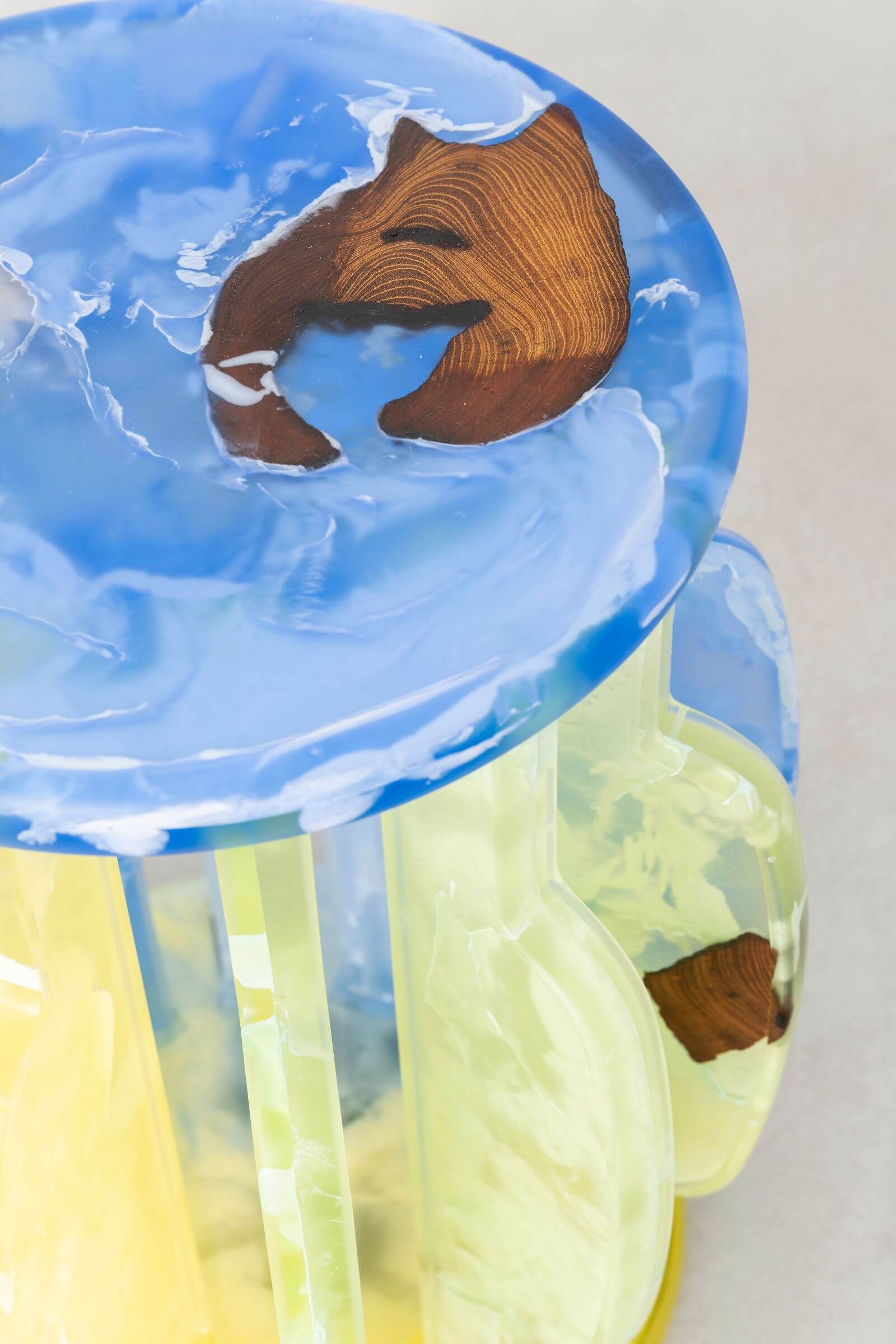
Jie Wu, ‘Summer Solstice’, 2022 (detail)
COURTESY: Jie Wu & Gallery FUMI
Aged 17, Wu moved to the UK to study textiles, first a BA at Chelsea School of Art, followed by an MA at the Royal College of Art, graduating in 2018. Already working with her signature materials, Wu created a series of mini jewellery boxes for her RCA graduate show and was spotted by critic and curator Corine Julius, who included her in a group show later that year. Julius also introduced Wu to Gallery FUMI and the design gallery has represented Wu since then. Thanks to their support over the last three years, says Wu, she has been able to scale up and make increasingly ambitious work.
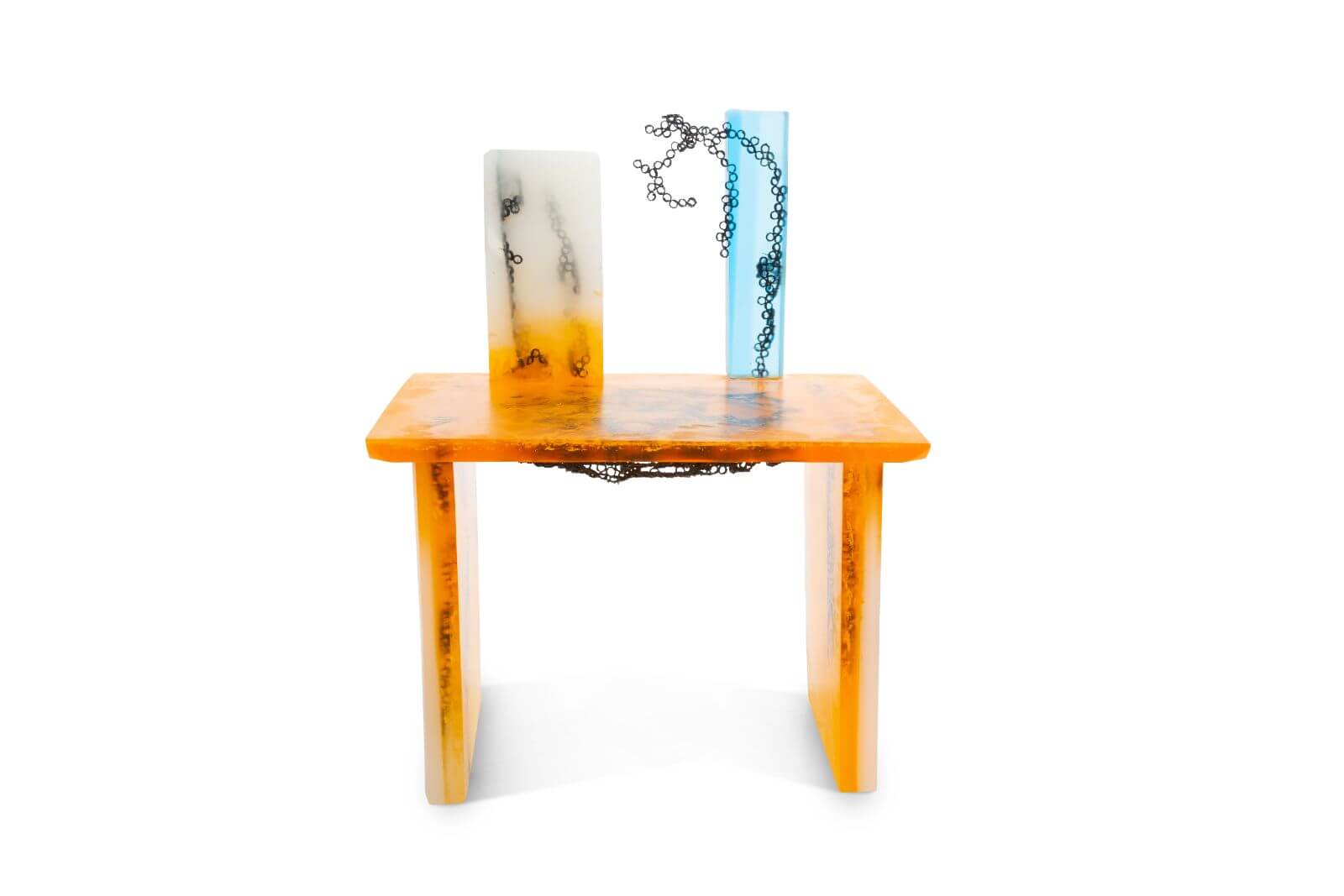
Tuomas Markunpoika + Jie Wu, ‘Rebirth’, 2021
COURTESY: Jie Wu, Tuomas Markunpoika & Gallery FUMI
At the heart of Wu’s practice is her application of modern aesthetics to traditional skills, and her strong commitment to exploring lost Chinese techniques. “I do a lot of research. I’m trying to bring back memories, but in a way that young people can relate to,” she enthuses, “I want people to fall in love again with the craftsmanship of the Tang and Ming dynasties.”

Jie Wu, ‘Out Jump Console’, 2020 (detail)
COURTESY: Jie Wu & Gallery FUMI
Wu favours a particular type of rosewood found only in a remote village in China. It is extremely hard due to its unusually long growing time and was once revered for its intricate interior patterns and dark red hue. Now hardwood furniture and interiors are no longer fashionable in China, rosewood is mostly used to make short-lived consumer goods, or simply for wood burning. Wu, however, remains tied to her childhood understanding of rosewood objects as things of value to be passed down through generations. Her works, she hopes, will be “the antiques of the future.”
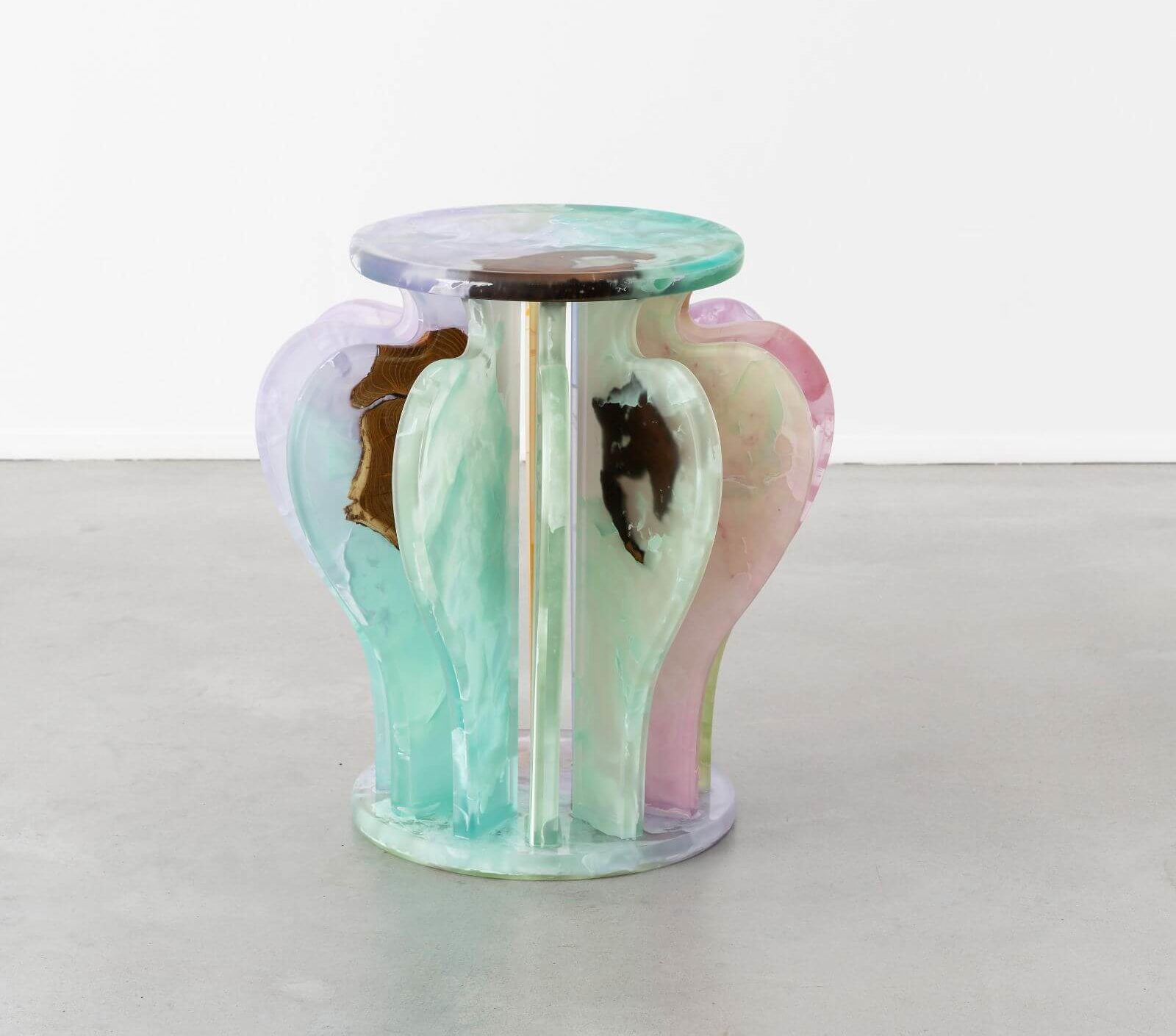
Jie Wu, ‘Spring Equinox’, 2022
COURTESY: Jie Wu & Gallery FUMI
The designer treats, shapes and dyes her rosewood by hand because, she says, traces of the human hand bring warmth and humanity to the final pieces. Placing it in a mould she has made herself, she pours layers of resin over the wood and adds various pigments to establish a visual dialogue between the two materials. By placing the rosewood in resin the designer reveals the complexity of the grain, shapes and tones of the ancient material. Finally, she machine cuts the pieces before hand-polishing them “to preserve the connection between the artist and the work.”
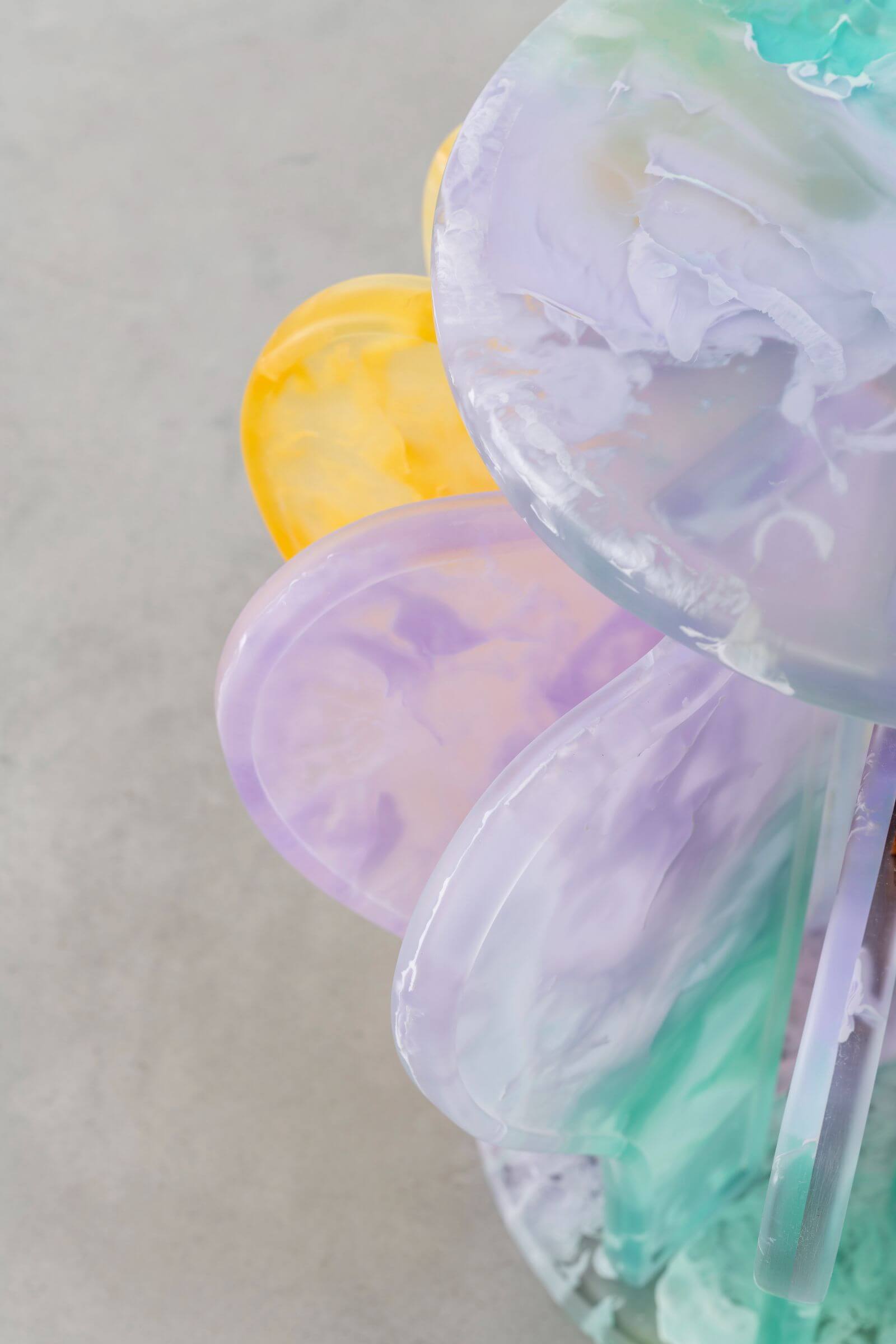
Jie Wu, ‘Spring Equinox’, 2022 (detail)
COURTESY: Jie Wu & Gallery FUMI
Undeniably covetable, Wu’s designs are also entrenched in the narratives of our time and younger collectors are likely to fall in love on both counts. Her work explores “the perceived values of natural and manmade materials in the Anthropocene era – the geological age that started when human activity became the dominant influence on the world’s climate,” she tells me.
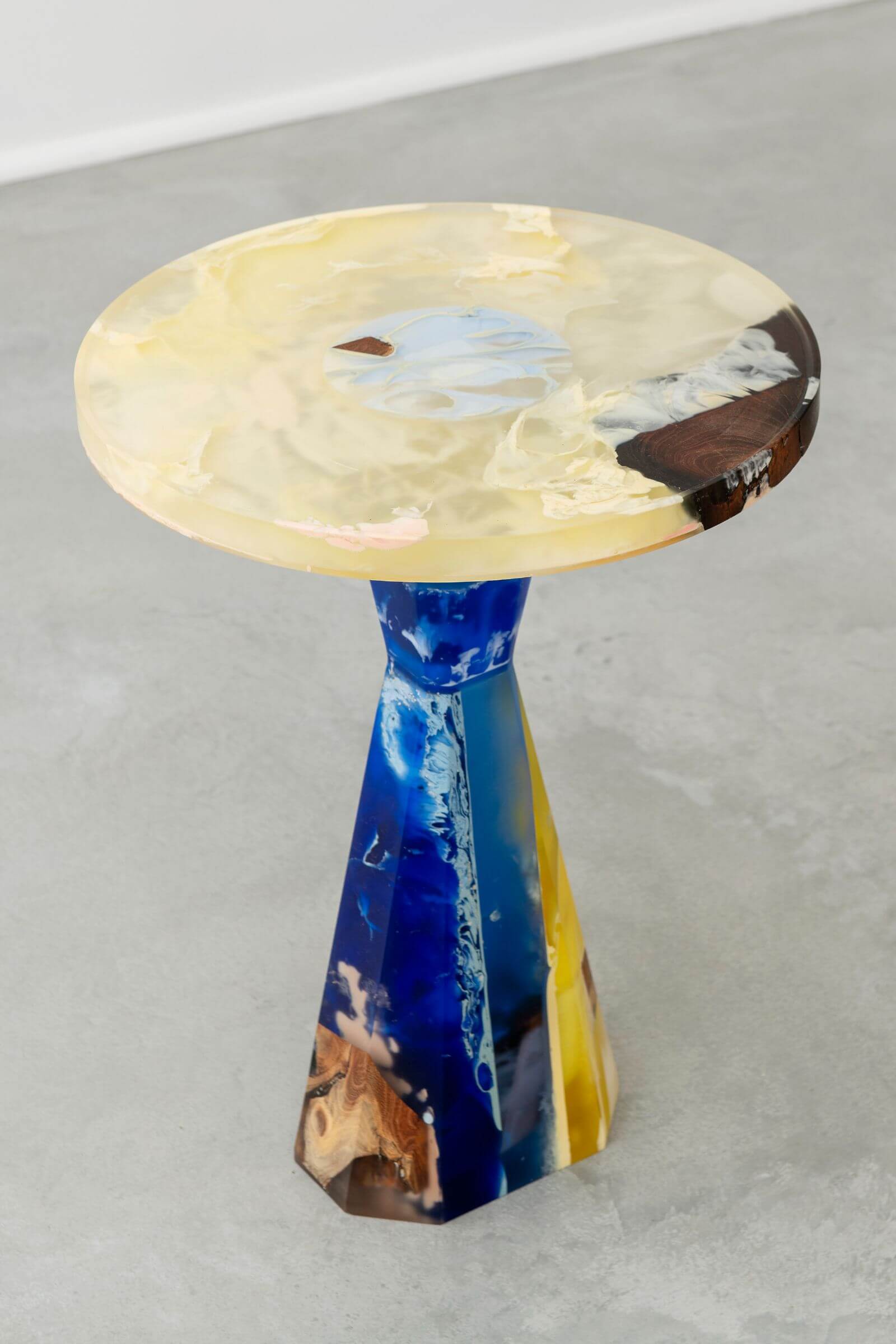
Jie Wu, ‘Roaming in the Sea’, 2019
COURTESY: Jie Wu & Gallery FUMI
While resin is not recyclable, her thinking on plastic is that longevity – if it is valued and used for decades to come – makes it sustainable, while its inclusivity is democratic. “I think resin can be treated like a traditional long-lasting material such as marble,” she says, and describes the marbled patterning in her pieces as “a wrestling dance of the organic and the plastic” that encapsulates our troubling impact on the earth.
-
Jie Wu, ‘Born out of Borders’, 2022
COURTESY: Jie Wu & Gallery FUMI
-
Jie Wu, ‘Born out of Borders’, 2022 (detail)
COURTESY: Jie Wu & Gallery FUMI
-
Jie Wu, ‘Born out of Borders’, 2022 (detail)
COURTESY: Jie Wu & Gallery FUMI
Wu’s latest collection, ‘Antique Chinese Palace Garden’, includes three side tables and a chandelier that combine enormous sophistication of form with an exuberantly beautiful palette. The project was inspired by lanterns found in the Imperial Garden.
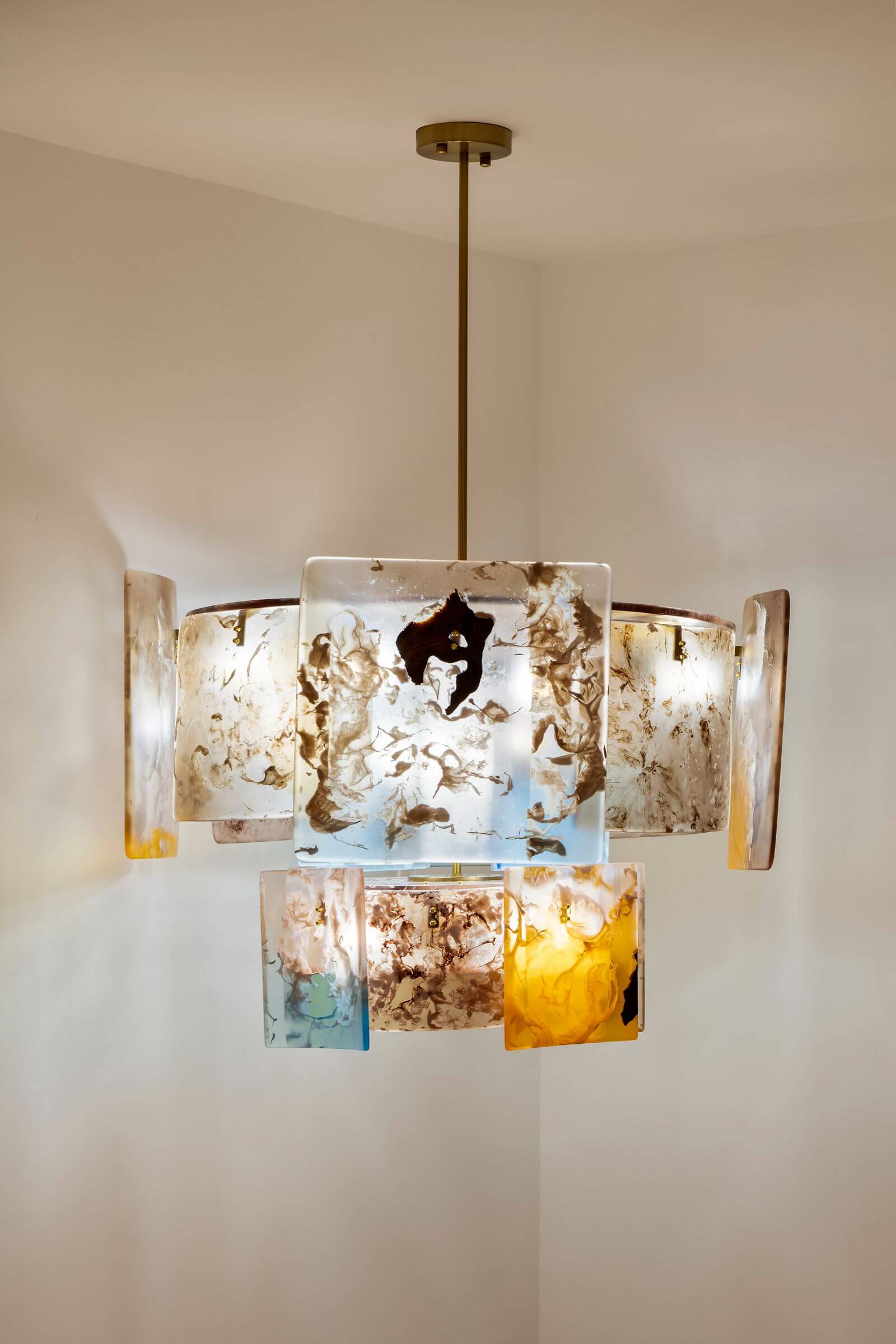
Jie Wu, ‘Una Historia Filosófica De Los Jardines II’, 2021
COURTESY: Jie Wu & Gallery FUMI
“Lanterns are symbols of light and peace,” she says. “I read somewhere that in Christianity, gardens also represent the resistance of external temptation in order to retain internal peace. Both the British and the Chinese are great gardeners and I think gardeners are always accompanied by light.”
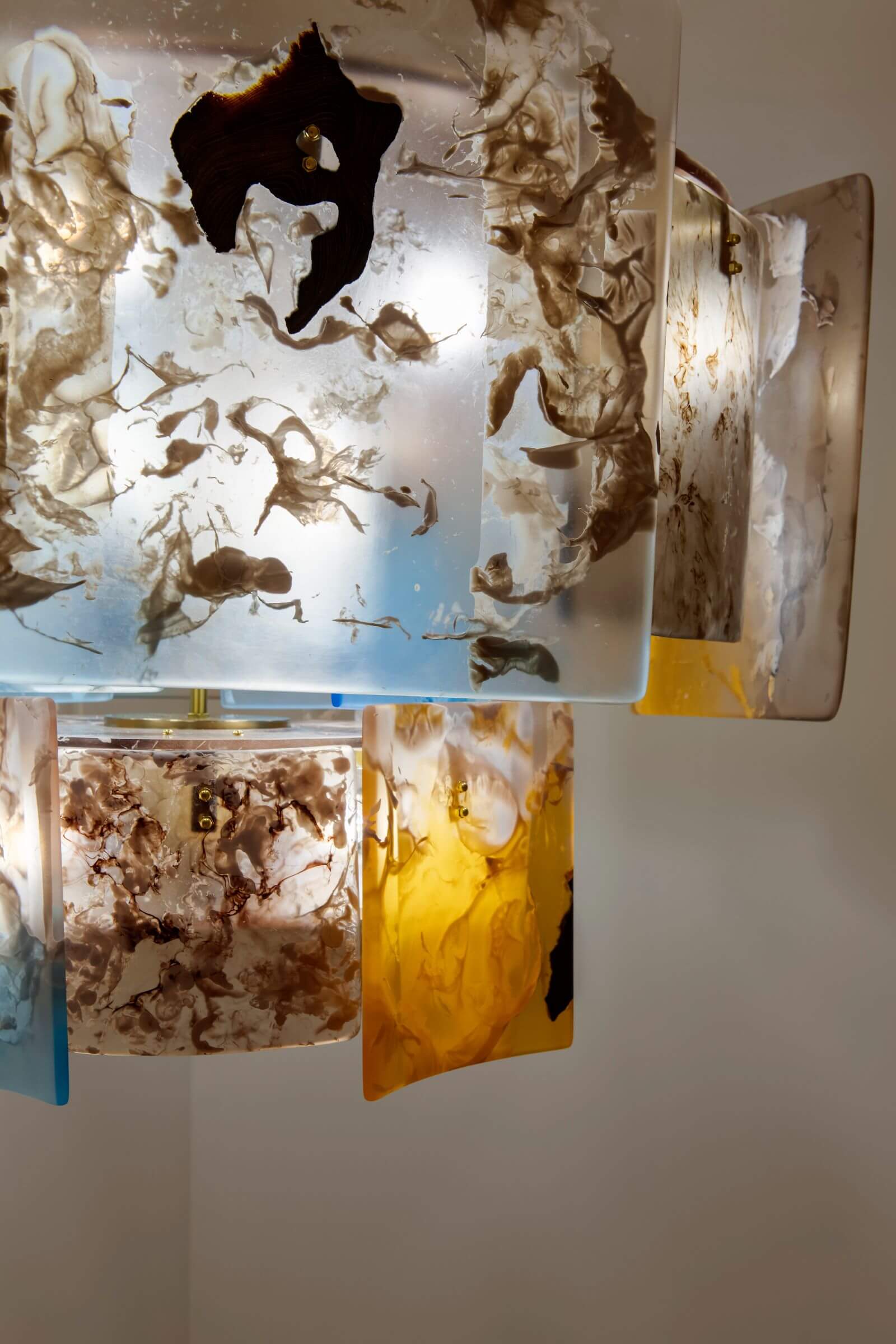
Jie Wu, ‘Una Historia Filosófica De Los Jardines II’, 2021 (detail)
COURTESY: Jie Wu & Gallery FUMI
Gallery FUMI is featuring a table, ‘Summer Solstice’, from the collection on their stand at PAD fair this month, and will include other works in forthcoming group shows. Wu, meanwhile, is on the hunt for a studio somewhere in north London “because it’s quiet and good for walking in nature,” and plans to continue exploring lost traditional Chinese techniques that “deserve to be cherished in a new way.”
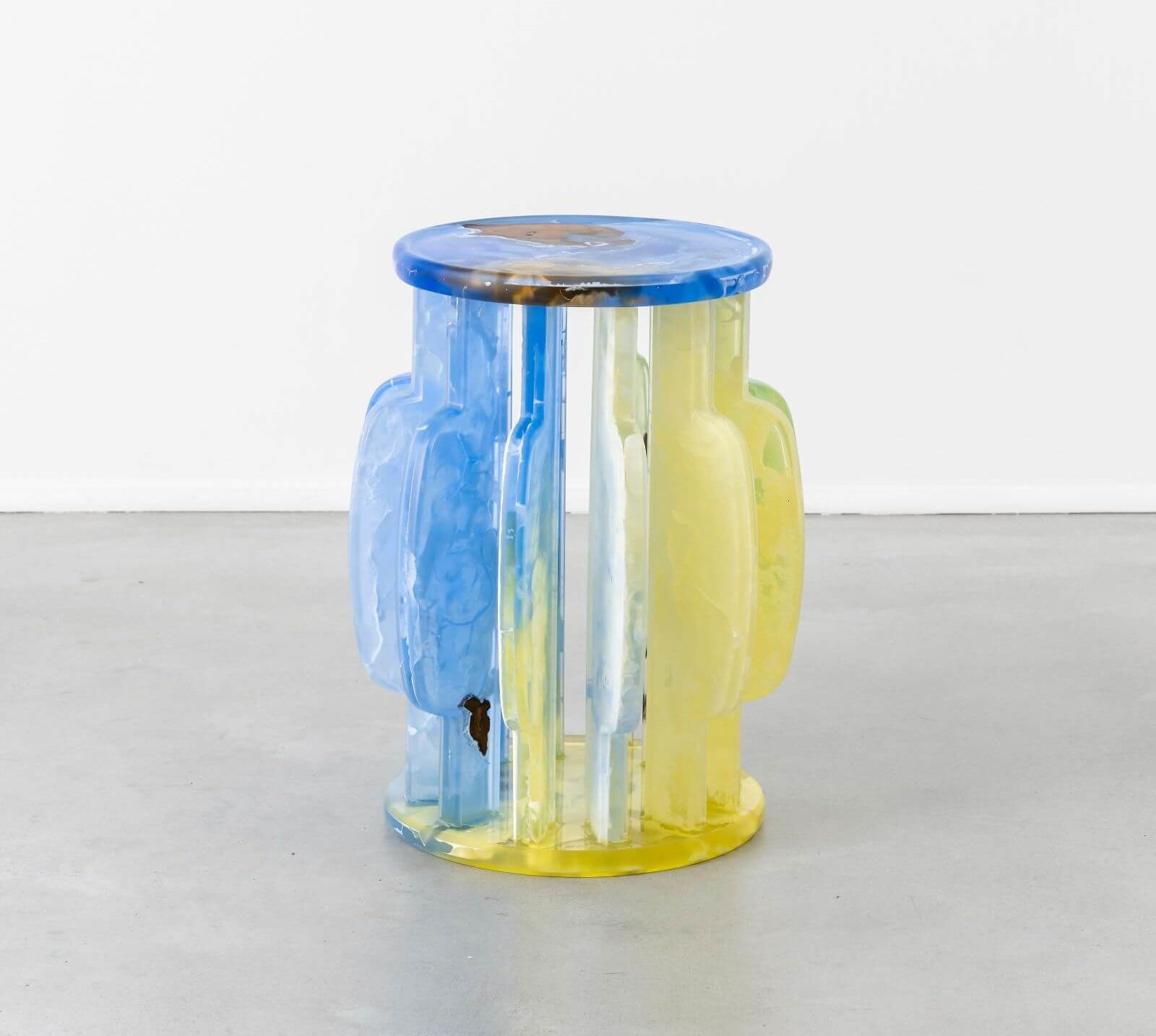
Jie Wu, ‘Summer Solstice’, 2022
COURTESY: Jie Wu & Gallery FUMI
Jie Wu at Gallery FUMI.
Works also on show at Formed With Future Heritage at the Design Centre, Chelsea Harbour until Friday 14th October.
